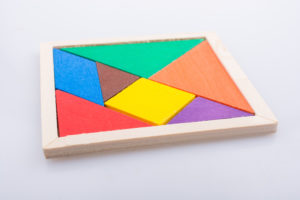
The group of ten-year-olds sat absorbed, thumbs moving. Each played an individual game on his cell phone.
Over the past few years I keep noticing this phenomena of groups of children who elect to be connected to their electronic games when there are “live knowledge objects” previously know as “people” sitting right next to them.
The electronic games are seductive and they have been programmed to hold your interest. Research shows that to keep our attention, input needs to be novel, interesting and change every nine minutes. While many computer games can hold a person’s interest for a long time, these games are not building up true concentration.
What we want to help develop is one period of 90 minutes of self-generated activities versus ten periods of nine-minutes reacting to screen stimuli.
Many electronic games don’t allow for pondering over strategy. You stop you lose. Games such as chess where each move is considered along with its possible repercussions are not your typical electronic pastimes.
There are millions of fans of electronic games and I’m sure they think that I am an old fuddy-duddy.
I’m the first to admit it.
I’m an old fuddy-duddy who is concerned about how children learn and the long-term effects of what and how children learn.
We know there are learned qualities that contribute to a lifetime of well-being. Self-regulation, concentration, focus, and confident decision-making are among the characteristics of people who enjoy their lives and help others enjoy theirs.
Games that help develop these skills need to be encouraged. Unplugged games, such as chess and checkers, strategic card games such as hearts, poker or bridge, to the more physical games of jump rope to basketball, contribute in multi-faceted ways to the develop of important skills.
One resource for ideas is Unplugged Play: No Batteries. No Plugs. Pure Fun. by Bobbi Conner. This book offers hundreds of pages of ideas of activities for the toddler to the teen, from crafts to board games.
A coffee table game that can also be tucked into a backpack is the tangram. This Chinese puzzle of seven pieces can be moved to form hundreds of shapes. A small wooden tangram can provide hours of fun for a six-year-old or a sixty-year-old.
A children’s book, Grandfather Tang’s Story, by Ann Tompert with illustrations by Robert Andrew Parker, tells a story with tangrams. As Grandfather Tang tells the story he moves the seven pieces of the tangrams to form foxes, rabbits, dogs, a squirrel, a lion, a duck and more. This book told with an adult moving puzzle pieces to form the next character is great unplugged fun.
Another tangram book is Tangrams: 330 Puzzles by Ronald C. Read. This book contains the history of the tangram and plenty of puzzles to solve.
I hope these ideas for old-fashioned fun will help some children disconnect from their phones and use more than their thumbs and eyes to learn and play.

Maren, I am also a fuddy-duddy like you. Even now that my daughters are grown, 27 and 22, when they visit, sometimes I invite them to play our “old” board games like Sorry!, Aggravation, Chinese checkers, card games. We have such a great time together and I get them to disconnect for a while from their phones. We feel totally connected and present when playing together like that and we laugh together. I love those moments, and pray that those memories are carried on for when they have their own children.
Martha,
Aloha!
I think we have the beginnings of the Fuddy-Duddy Club.
Thanks for sharing your experiences as perhaps they will inspire others to have more FUN!
I loved Aggravation! Bought a vintage one off of ebay for my own children. 🙂
Natalia,
Aloha!
Sounds like fun!